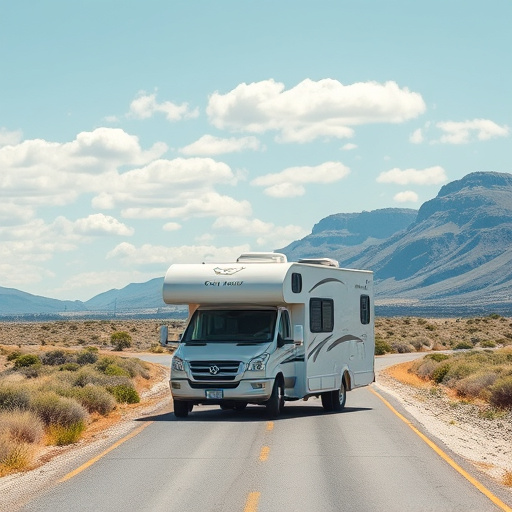For RVing for Beginners, safely navigating bridges requires understanding bridge height clearance, checking maps & signs, adopting good driving habits, and using laser measuring tools to avoid collisions. Experienced RV owners should also leverage detailed RV-specific maps, online resources with real-time data, and local regulations to ensure smooth, collision-free travel through narrow passages and under bridges.
For RV owners, understanding bridge height clearance is a vital skill to ensure safe travels. ‘RVing for Beginners’ guide tackles this crucial aspect of navigation, highlighting common mistakes to avoid and offering practical tools and techniques. Learn how to master the art of passing under bridges with confidence, covering essential best practices tailored for newcomers to this unique challenge. Get ready to hit the road without the hassle of height-related collisions.
- Understanding Bridge Height Clearance: A Crucial RVing Skill
- Common Mistakes to Avoid When Navigating Bridges with Your RV
- Tools and Techniques for Ensuring Safe Passage Under Bridges
- Best Practices for Maintaining Height Clearance While RVing for Beginners
Understanding Bridge Height Clearance: A Crucial RVing Skill

For RV owners and beginners alike, navigating bridges is a critical skill that requires attention to detail. Understanding bridge height clearance is essential for safe RV travel, as underestimating this factor can lead to costly collisions. When driving an RV, especially in rural areas or less-traveled routes, it’s common to encounter low-clearance bridges that might not be evident from the road below.
For RVing newcomers, recognizing these structures and knowing how to assess clearance is a valuable asset. Always check local maps before embarking on a trip to identify potential bridge crossings. Pay close attention to signs indicating height restrictions and keep an eye out for visible markers as you approach bridges. Practicing good driving habits, such as reducing speed and maintaining a safe following distance, can further ensure a smooth passage through these narrow pathways.
Common Mistakes to Avoid When Navigating Bridges with Your RV

When navigating bridges while RVing, beginners often fall into a few traps that can lead to stressful situations. One common mistake is failing to check clearance heights beforehand. Every bridge has different limitations, and not knowing the height of your RV can result in a costly collision. Always plan your route and verify the clearance requirements before approaching any bridge.
Another blunder is assuming that taller structures mean more risk. While this isn’t always true, it’s crucial to be cautious around overhead power lines, tree branches, or signage—especially if your RV is on the higher side. Additionally, RVing for beginners should remember to slow down and reduce speed when navigating tight turns or narrow bridges, ensuring a safe passage without any last-minute surprises.
Tools and Techniques for Ensuring Safe Passage Under Bridges

For RV owners and enthusiasts, understanding height clearance requirements is a crucial aspect of RVing for beginners and experienced travelers alike. When navigating through narrow passages and under bridges, accurate measurements and awareness can prevent costly collisions. One effective tool for ensuring a safe passage is utilizing laser measuring tools that provide precise data on the vertical clearance available. These devices are easy to use; simply point and shoot to get instant readings, allowing drivers to make informed decisions about whether their RV will clear an upcoming bridge.
Additionally, consulting detailed maps specific to RV travel can offer valuable insights into height restrictions and scenic routes. Many online resources and apps provide real-time data on bridge heights, making it easier for drivers to plan their journey and avoid potential hazards. By combining these practical techniques with careful observation, RV owners can confidently traverse bridges, ensuring a smooth and collision-free experience for all passengers and the vehicle.
Best Practices for Maintaining Height Clearance While RVing for Beginners

For RVing beginners, maintaining proper height clearance is a crucial aspect of safe travel. Before hitting the road, familiarize yourself with your RV’s overall dimensions, especially its roof height. Check the vehicle’s owner’s manual or consult with a professional to understand the exact clearance requirements for navigating bridges and low-hanging structures. Many new RV owners tend to underestimate the height of their vehicles, so taking measurements is essential.
When planning routes, use online resources and maps that indicate bridge heights to ensure you choose suitable roads. Always plan ahead and consider alternative routes if a particular bridge has limited clearance. Remember, some bridges may have signs warning of low clearances, indicating potential hazards. Stick to well-maintained routes and stay informed about local regulations and height restrictions to avoid costly collisions and ensure a smooth RVing experience for beginners.
For RV owners, especially those new to the road, height clearance awareness is a vital skill that can prevent collisions and ensure safe travels. By understanding bridge heights, avoiding common mistakes, and employing the right tools and techniques, RVing beginners can confidently navigate these structures. Remember, maintaining proper height clearance is key to a smooth and incident-free journey.
